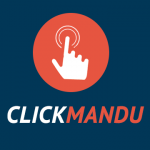Kathmandu: Nepal’s internet market is heavily dominated by just five major companies, which collectively control 72 percent of the fixed broadband market, according to the latest data from the Nepal Telecommunications Authority (NTA).
As of the end of Asar (mid-July 2025), Nepal had a total of 3.24 million fixed broadband users. Among them, WorldLink Communications Ltd. leads the pack with over 1 million subscribers, capturing a 31.17 percent market share — the largest among all providers.
In second place is Dish Media Network Ltd., which has seen rapid growth in recent times. With 361,394 subscribers, Dish Media now holds an 11.12 percent market share.
Government-owned Nepal Telecom (NTC) ranks third, serving 354,438 customers, accounting for 10.91 percent of the market. Despite its public backing, it trails behind the top two private players in subscriber numbers.
Vianet Communications Ltd. comes in fourth, with 319,000 users and a 9.82 percent share of the market. Meanwhile, Subisu Cablenet Ltd. holds fifth place, catering to 299,000 subscribers and capturing 9.21 percent of the market.
The rest of the market is divided among smaller internet service providers (ISPs), with ClassicTech having 187,137 customers (5.76 percent market share), followed by Websurfer Nepal with 175,659 users (5.41 percent).
Other notable ISPs include Techminds Network: 101,580 users (3.13 percent), CG Communications (Chaudhary Group): 82,860 users (2.55 percent), and WiFi Nepal: 80,371 users (2.47 percent).
Additional ISPs like Broadlink Network (1.64 percent), FiberWorld Communications (1.31 percent), and Sajilo Net (1.06 percent) hold modest shares.
Several other providers — including FirstLink Communications, Connect Nepal Network, ArrowNet, Chitrawan Unique Net, Pokhara Internet, Everest Wireless Network, and iZone — each hold less than 1 percent of the market individually.
With increasing competition, the ISP sector in Nepal continues to grow rapidly. However, the data shows a clear concentration of market power among a few dominant players, posing both challenges and opportunities for smaller providers in the years ahead.



Comment Here